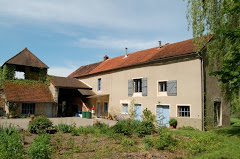Ever tried to translate some English prose into a language one hardly masters? Based on one’s education (in my case 1 year + 2 years German in various schools) and experience (none) this is not necessarily a doddle. When I was young, having a C or D for German was still seen as a belated act of resistance, hence why bother working hard to boost your knowledge of the German language?

Anyway, recently I wanted to post something in German on the Internet. A friend of mine, an ex-teacher (in German) agreed to take out the blatant errors, on the condition that this was going to be a one-off. This was my first encounter with German since the sixties. Was it sheer arrogance that made me revive the idea to have our website in English, Dutch, French and …. German?
I will not bore my readers with a detailed run down on my struggle with declinations, three genders, conjugations, four grammatical cases, uppercase for nouns, etc. What I would like to make clear is that some obsolete dictionaries and an ancient grammar book are not really sufficient for a smooth, quick and adequate translation, no matter how one simplifies the original text. Luckily there is a vast array of tools available on the Internet, and cross referencing with Wikipedia in Dutch, English, French and German, using Google to search for a word one assumes exists, and using the German Wiktionary helps tremendously. Still, it is a heavy task to produce something that does not automatically results in a declaration of war, as soon as a German reads the final product.

After three days of hard and concentrated work we now have a German website. Someone might actually remark that there are free translation programs available, such as Babelfish. To show the “quality” of those programs, I will translate the previous sentence from English to German and back to English again, using Babelfish.
1. Someone might actually remark that there are free translation programs available, such as Babelfish.
2. Jemand konnte, dass es die vorhandenen Programme der freien Übersetzung gibt, wie Babelfish wirklich erwähnen.
3. Someone could that there are the existing programs of the free translation, how Babelfish really mention. Of course this a fictitious, and not completely fair test; however it certainly shows that free translators do not produce much more than pidgin German. I am convinced, that my translation is full of errors. However, read out aloud, with the right Prussian accent, it certainly sounds like German!
Mit freundlichen Grüßen, Käse aus Holland.
The website of La Tuilerie de Chazelle



